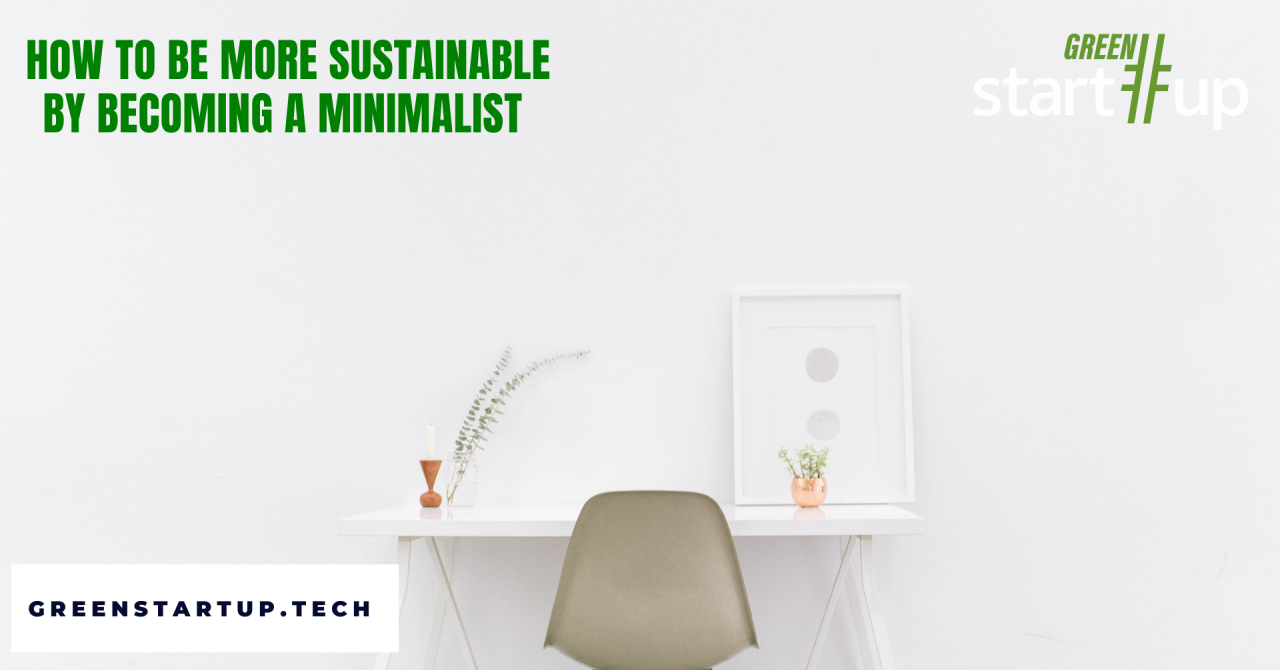What is minimalism and how it helps sustainability
The key thing is to learn to appreciate all the things that surround you, without looking to own more that wouldn't bring value to you.
At the same time, sustainability is about not consuming finite resources and trying to make the most of regenerative ones and those that are already being used. This can be done through harnessing renewable power, such as solar or wind, or by recycling and repurposing.

Some experts believe that by embracing both concepts, we can live more fulfilling lives and feel happier, feeling more connected to what matters around us, like our family and our career.
How do you know when you embraced minimalism
There are a few things that can help you become a minimalist and more sustainable, but the key aspect you need to keep in mind is to try and get rid of the things you don't use.
Some people like to hold on to things that "might come in handy later". Keep that old keyboard that you replaced, because your current one might break or put your old smartphone in a drawer, because you might lose your current one.
This can also apply to things like clothes that you might not have worn in a long time or a piece of furniture that just collects dust.
Minimalism can help with energy efficiency, as well
It may surprise you, but by getting rid of the things you don't need, you can do more than just be productive and overall happier.

One way minimalism can help is with energy efficiency. By having less furniture that you don't use anyways, you can vacuum the house faster, saving on power and time.
Also, by having fewer things, you could make more use of natural light, reducing the need to turn the bulbs on, again saving on power.
This doesn't mean that you should only have one bed, a desk and a wardrobe in order to be a minimalist, but look around you and see which pieces of furniture are used, even if once every few days, and what goes unused for weeks or months.
Shop only when you need to
In this day and age, with smartphones being released on a yearly basis or more often, and cars and TVs being refreshed constantly with just tiny design changes or minuscule improvements, it's more tempting than ever to get the new thing, even when you don't need it.
But should you? Probably not, unless your current model is over 4-5 years old, at least for smartphones, in which case upgrading may not be an outrageous thing to think about.
Again, ask yourself honestly if you need to upgrade and give yourself 30-60 days before you make up your mind. In that time frame, just use your current phone and observe if there's something seriously wrong with it, like the performance falling apart or the speakers not functioning properly.

If the battery gives you trouble, try swapping it for a new one, you'll save tons of money and keep your phone for another year or two, when you're more likely to notice improvements on the new model. When you finally replace your devices, no matter what they are, don't forget to recycle them or pass them to someone who might still use them.
Shop quality, not quantity
This is where minimalism and sustainability go hand in hand, again, because by shopping for quality things, you ensure that you buy something that lasts and improves your quality of life.
You can also find quality goods that are made of recycled materials, such as computers and phones, but not only.
Also, having high quality goods, in general, whether it's clothes, electronics or furniture, will make you feel less like you need to upgrade them due to poor quality or lack of features, which will also create less waste.

Try to invest in reusables, such as coffee cups that you can take with you to the coffee shop, as that might save you some money and you will definitely save the planet.
Finally, don't forget to periodically check your expenses and see where you can make improvements. This doesn't mean cutting pleasures out entirely, as you can still treat yourself with a meal at a restaurant or a scent candle with your favorite perfume.
Ultimately, these are just some tips to help you get onboard minimalism, which out of principle goes hand in hand with sustainability. This is because both aim to help you own just the things that you need, while decluttering your life from objects and goods that are of no value to you, but can be recycled or repurposed.
 Mihai - Cristian Ioniță
Mihai - Cristian Ioniță












Any thoughts?